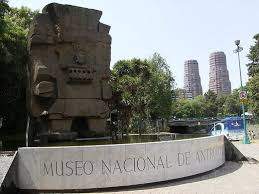The Monolith of Tlaloc was discovered unexpectedly and has since been known as the largest man-made monolith in Mexico.
Tlaloc is mostly known as the Aztec god of rain and thunder. Like many gods in other cultures, Tlaloc was believed to inhabit the mountaintops. Although Tlaloc was a positive deity and treated people favorably, being himself created by other gods, he could still send all sorts of disasters associated with the water element — rains, droughts, floods, hail, thunderstorms, and hurricanes. The Aztecs brought him human sacrifices, drowning victims (including children) in Lake Texcoco’s waters.
Scholars have met certain difficulties dating the Monolith of Tlaloc. According to some sources, it was erected in the 5th century AD. According to others, it would have been made in the 8th c.
For centuries the monument laid in the thickets of vegetation at the bottom of a dried-up river bed near the small town of Coatlinchan near Texcoco. It would have continued to stay there were it not for the unexpected discovery made while digging canals for irrigation.

Almost a century later in 1964, the Mexican authorities decided to move the Monolith of Tlaloc to the capital to decorate the entrance to the newly opened National Museum of Anthropology and History. Not an easy task. The statue weighs more than 168 tons! And the move was accompanied by a tremendous downpour that flooded much of the city center. It’s never been forgotten.

Leave a Reply